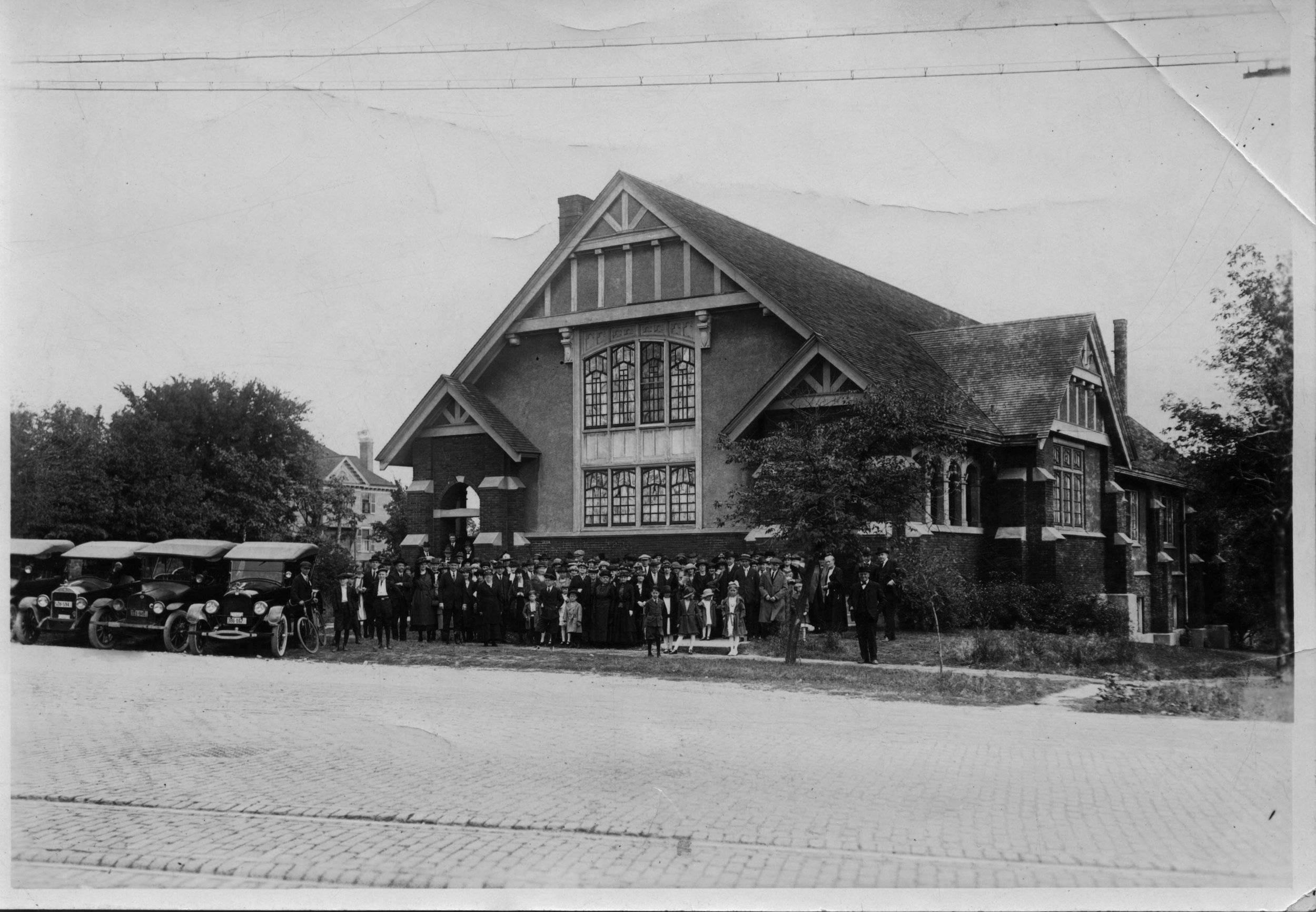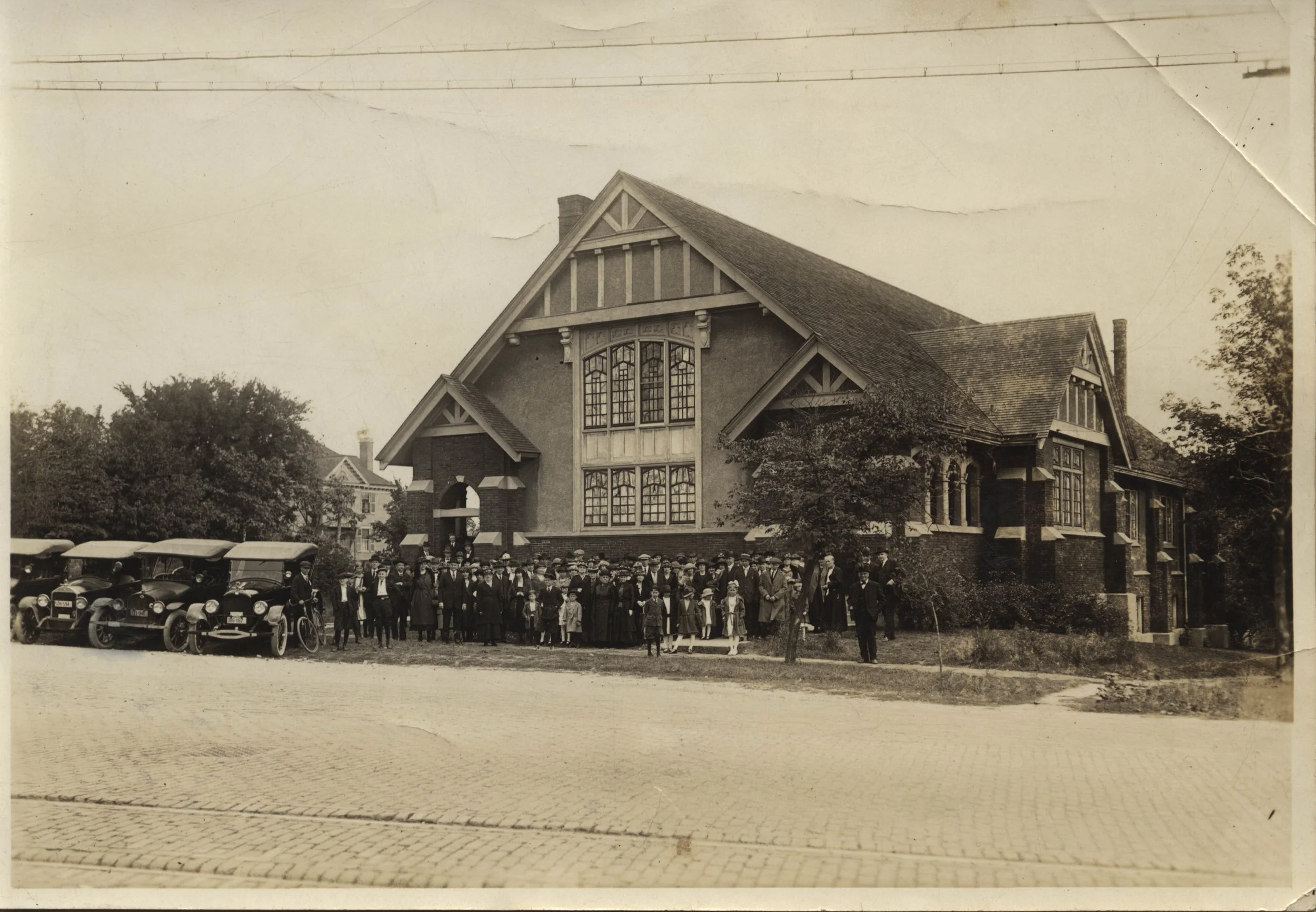
Our History
Prior to Calvary calling this building home, it was Epworth United Methodist church. This photo is from September 1922. This particular Sunday was a day when churches throughout Elgin celebrated “Automobile Days.” It was something of an evangelistic endeavor, as those who owned cars were encouraged to fill them with those that did not. In the foreground, you will notice the brick streets, and the rails for the trolley, as well as the electrical wires for powering the trolley.
Timeline
1966 - Calvary Baptist Church began as the East Side Mission in Elgin.
1967 - CBC was incorporated as a church and changed their name to Calvary in remembrance of the source of our salvation.
1977 - Reverend Tim Wills became the pastor of Calvary and served for 25 years retiring in 2003.
1980 - Through the years Calvary has called several places home, finally settling into our building at 551 Arlington Avenue in 1980.
2005 - Calvary called the Rev. Craig Furtick to shepherd the church. After much prayer and consideration of God’s direction for his life and ministry, Craig resigned in March 2008.
2009 - Scott Ballance began serving as interim pastor in January 2009. He is a long standing member of Calvary Baptist Church.
2010 - Calvary called Pastor Scott to be the bi-vocational pastor on October 17.
2013 - Calvary called Noah Adams to be the Associate Pastor and Youth Pastor after 3 years of volunteer leadership.
2017 - Pastors Scott and Noah each took on new roles. Pastor Scott served as Minister of Pastoral Care while Pastor Noah served as Pastor of Teaching and Vision. In June of 2021, Pastor Noah received a call to pastor a church in Colorado. From June 2021 til October 2021 Pastor Scott served as interim preaching pastor while the pastor search committee sought the Lord’s guidance on Calvary’s next pastor.
2021 - On October 24th, Calvary called Tony Doppke to be their lead pastor. Pastor Scott began serving as Associate Pastor.
2024 - On May 5th, 2024, the congregation of Calvary adopted a new church constitution, establishing an elder-led, deacon-served, and congregationally-governed church structure. This change aligns with the model we see in Scripture and historic Baptist tradition.

